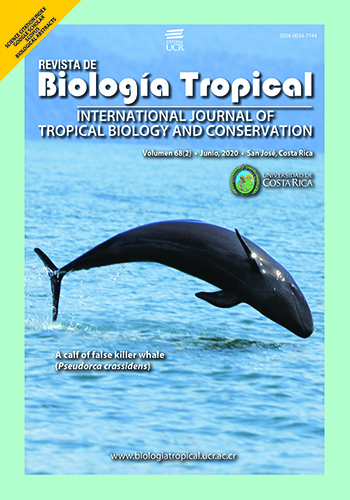Abstract
Introduction: Due to its current coverage, the root biomass of tropical pastures is of vital importance for the terrestrial carbon storage, but its estimation has been mainly indirect and with a very wide range of values. Objective: To document at national and global level as well as compare, the root carbon stocks extracted directly from two grasslands of different growth type and origin. Methods: The biomass and root carbon stocks were directly extracted from two tropical pastures with more than 40 yr of age. The biomass and total carbon, one native with stoloniferous growth (Paspalum notatum Flugge) and one introduced with growth in tillers (Urochloa decumbens Stapf) were measured. The study was conducted between august and october. Three plots of 1600 m2 each were selected per pasture, with 10 sub-squares (4 m2 each) in each plot to determine the floristic composition, aboveground biomass and C. The biomass and root C were estimated by hand in three trenches (1.50 m x 0.50 m x 1.0 m) per plot. The organic carbon content was determined with the ignition method at an average temperature of 550 ° C for 3 hours. For the statistical analysis, a two-factor ANOVA was used, where one factor was the treatments that were the type of pasture (2) and the other factor was the plots (3) of each pasture. Results: The floristic composition of the two types of pasture was different due to its management history. On average, 28.25 Mg / ha of total C was estimated for the locality. The native pasture of stoloniferous growth P. notatum yields almost three-fold more biomass (42.5 Mg C / ha) than the introduced with growth in tillers U. decumbens (14 Mg C / ha) due to the radicular storage (38.5 vs. 11.46 Mg C / ha). Seventy-four dot five percent of the carbon in P. notatum was located in the radical part and 25.5% above-ground, while in U. decumbens 56.5% and 43.5%, respectively. Conclusions: The best adaptation of the native grass as well as the morphology of its root system may explain this difference. Ninety six percent of the biomass and root C is found in the first 0.50 m depth. Due to the contribution of its radicular portion, tropical pastures can constitute important reservoirs of terrestrial carbon considering its extension nowadays.
##plugins.facebook.comentarios##

This work is licensed under a Creative Commons Attribution 4.0 International License.
Copyright (c) 2020 Recepción RBT; José Luis Martínez Sánchez






